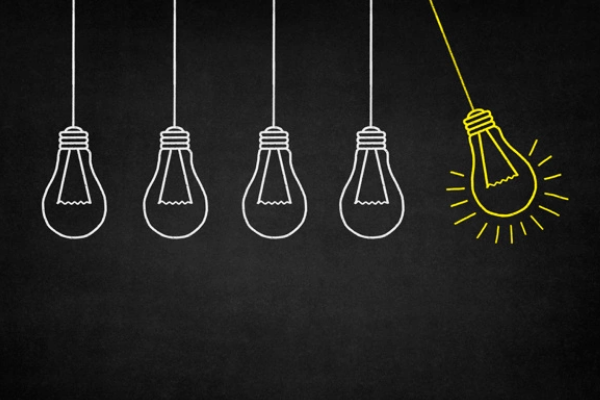Nearly 45% of the IT projects run out of the estimated budget, while 7% of projects are delivered late, says a report by McKinsey.
To ensure that your projects are completed within the stipulated deadlines and budget, you must plan out and analyze your project requirements carefully. And that's why the 'Discovery Phase' of any project is of critical importance.
So here we are, taking a look at what exactly the discovery phase entails and how Srijan teams conduct a discovery workshop.
Discovery phase: a quick snapshot
The Discovery Phase is a sequential process of collecting and analyzing the information gathered for a particular project. This information needs to be accurate and authentic so that team members are able to understand more about the project, its ramifications for the business, and its intended market and audience.
The goal here it help the project execution team understand and aling with the goals of the business stakeholders - why this project is important, what's the challenge that needs to be addressed, who are the final users of the projects. The answers to these questions enables the team to devise a tailored action plan that will deliver the highest business value and help accomplish project objectives on time.
Thorough research, one-to-one communication, and data analysis can help solidify the goal and define project direction for the entire team. It also clarifies any possible doubts a participant has in his/her mind with respect to the project and its development.
Why the Discovery phase matters for organizations?
You cannot build a great solution till you know what the peoblem is. The discover phase is imporatant for organizations to ensure that everyone involved has the full picture of what the project entails, as well as an in-depth knowledge of every minute requirement. The key benefits of a thorough discovery process are:
-
Builds better solutions
It helps your project management team understand your product in a better way. They can easily resonate with your vision and your end-goal.
Having prior knowledge on all fronts helps the team to design and develop better solutions. They can make smart and informed decisions based on their understanding and are ready to innovate with your original project scope.
- Prioritizes end-users
As teams get busy with developing a solution, there is a general tendency to work in a manner that meets the project goals but not necessarily the requirements of the end-users. While this is never intentional, losing focus of the end-user experience is a common mistake that development teams make, especially when racing against project deadlines.
But when you invest time in the discovery phase, your team is able to understand the end-user perspective and translate it into a set of tangible guidelines for product development. This reduces the probability of repetitive iterations or project delays, and ensures that your users get a better and more satisfying customer experience.
-
Brings everyone on the same page
Discovery phase brings every project team member on the same page. It helps them avoid misunderstandings and make informed decisions so that your business can have the best product outcome.
How Srijan conducts a discovery workshop
Srijan's product engineering teams emphasize on an in-depth discover phase that's designed to collaborate with your team in a workshop setting to understand, and learn about the product, its vision, and its role in the growth of your business. We typically break it down into three parts:
Part I: The kickoff meeting
We initiate the discovery process with a kickoff meeting wherein we invite you to talk about the product or solutions that you want. You can tell us about your their current challenges and how you envision it being solved by this solution. Think of this as a product appreciation session where we focus on understanding the product’s ambitions, goals, and intended use cases.
This kick-off session acts as the first touch-point with the client, but need not be limited to a single session.
In the later half, Srijan proposes a high-level tentative solution based on our understanding of your project vision and requirements. The goal is to gain initial reactions to this rough idea and gradually close down the gap between your vision and our proposed solutions, an gain complete alignment.
Srijan proceeds further by analyzing all the information they have to create a fairly detailed solution and propose it back to the client. In the last segment, Srijan documents the proposed solution into their “Discovery workbook” and meets the stakeholders (to walk them through the entire list of features) along with the users (to understand their pain points). All the final inputs are then taken and consolidated within the workbook.
Part II: Requirement gathering
Once Srijan has an understanding of how the your business functions, and the role that this particular plays within that, our team gets down to the details. This involves multiple Q&A sessions with different project stakeholders - right from those who conceptualized it, to the end users. The team also breaks down your project requirements at the micro-level to come up with relevant questions for the sessions. Our teams also go through multiple workshops covering the user journey path to have a detailed understanding of how the solution will be used.
All this helps us understand what you want the product to be, and what are the desired functionalities and use cases. We are able to define the product in greater detail and craft customized solutions that can deliver on your vision.
Part III: Discovery workbook
The end product of the discovery phase is the discovery workbook - a document that captures all your project requirements in one place. It breaks down all the sessions - workshops, Q&A, user journey details, requirements/features at the micro level, and maps it out in as much detail as possible.
The workbook encapsulates not only the features/requirements in a text format, but also supplements that with relevant wireframes, mockups, and file insertions like PDFs.
For a better understanding, we also extends the workbook to get a fair idea of how the solution will be rolled out to the end-user. It’s a complete guide capturing everything from the discovery process, and planning out a roadmap for the project development and launch.
Srijan follows an Agile methodology to translate the discovery workbook into a cohesive and complete product backlog that goes into JIRA, to kickstart the development process.
The discovery phase is not just an optional component if you goal is a successful project, delived on time and within budget. A thorough discovery is what allows us to create enterprise solutions that tackle digital transformation challenges and deliver products and services that users love.
Looking for a experiences product engineering team? Let's start the conversation on how Srijan teams can help.
Our Services
Customer Experience Management
- Content Management
- Marketing Automation
- Mobile Application Development
- Drupal Support and Maintanence
Enterprise Modernization, Platforms & Cloud
- Modernization Strategy
- API Management & Developer Portals
- Hybrid Cloud & Cloud Native Platforms
- Site Reliability Engineering




